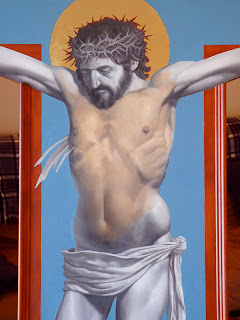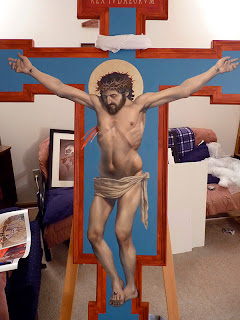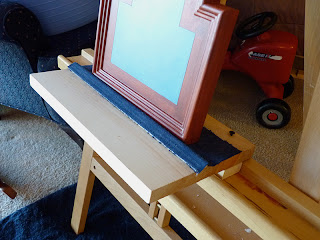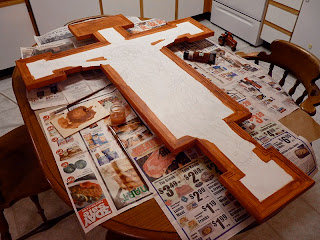This will be the last process update until December, because the crucifix is hanging at the show for the month of November. The process photos are taken between Oct. 22 and 24.
On the last post, I showed the underpainting process. This post shows the glazing process. It's tempting to just show the photos that look like everything was going perfectly, but truth be told, the first day of glazing was a lot of frustration. In the past, I had used Liquin fast-drying medium as a painting medium. But I've since read that it starts to turn brown after only a few years, and I think I can see that happening already in the painting that currently hangs at Trinity Chapel.
So I did some searching online for a recipe for a more traditional glazing medium. The ingredients I saw most often were stand oil, Dammar varnish, and turpentine/mineral spirits. The first mixture I tried was far too sticky, and trying to modify it two subsequent times resulted in equally poor results. The photo below shows the first of three attempts, each of which I had to wipe off with mineral spirits. This is why it is important to wait until the underpainting is thoroughly hardened before glazing.
With the fourth attempt, I scrapped the whole batch of medium and mixed refined linseed oil with some mineral spirits and a small amount of Dammar varnish. The drying time I knew would be slower, but I didn't have the time to experiment for the perfect medium. Because I wouldn't have time for subsequent coats of color before the delivery date, I had to modulate the color on a single layer.
The underpainting on the face and loincloth were still tacky, so I had to wait two more days before glazing them. Otherwise, the first layer of color could have been completed in a day.



















































